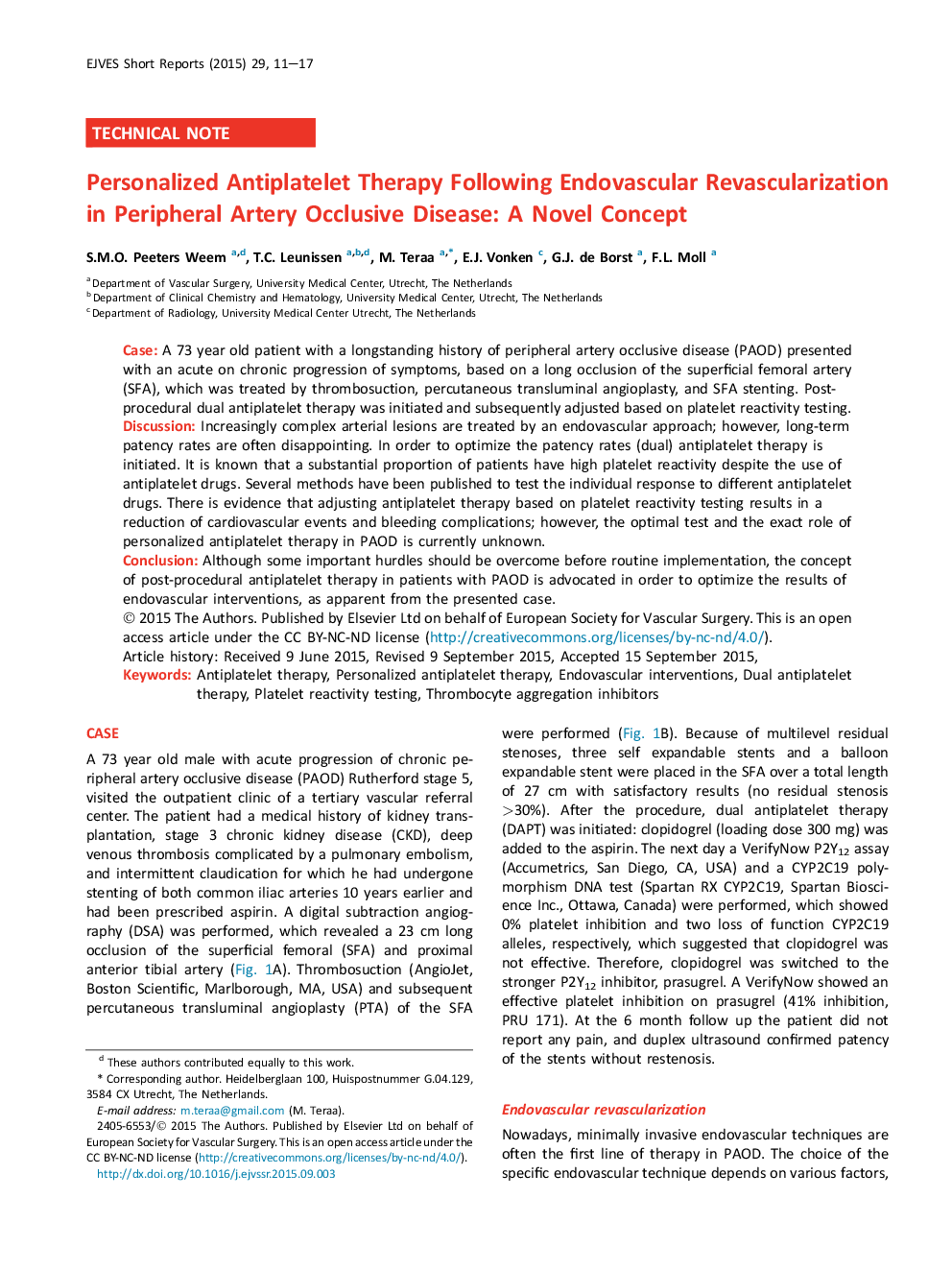| کد مقاله | کد نشریه | سال انتشار | مقاله انگلیسی | نسخه تمام متن |
|---|---|---|---|---|
| 2911476 | 1575355 | 2015 | 7 صفحه PDF | دانلود رایگان |
• Large interindividual variation exists in response to antiplatelet drugs; 20–40% of patients are non-responders.
• Adjustment of antiplatelet therapy based on reactivity testing could result in fewer cardiovascular and bleeding events.
• Despite a lack of high quality evidence we advocate an individualized approach with respect to antiplatelet therapy.
• Future research should focus on the best test to measure effect of APT and the exact role of individualized APT in PAD.
CaseA 73 year old patient with a longstanding history of peripheral artery occlusive disease (PAOD) presented with an acute on chronic progression of symptoms, based on a long occlusion of the superficial femoral artery (SFA), which was treated by thrombosuction, percutaneous transluminal angioplasty, and SFA stenting. Post-procedural dual antiplatelet therapy was initiated and subsequently adjusted based on platelet reactivity testing.DiscussionIncreasingly complex arterial lesions are treated by an endovascular approach; however, long-term patency rates are often disappointing. In order to optimize the patency rates (dual) antiplatelet therapy is initiated. It is known that a substantial proportion of patients have high platelet reactivity despite the use of antiplatelet drugs. Several methods have been published to test the individual response to different antiplatelet drugs. There is evidence that adjusting antiplatelet therapy based on platelet reactivity testing results in a reduction of cardiovascular events and bleeding complications; however, the optimal test and the exact role of personalized antiplatelet therapy in PAOD is currently unknown.ConclusionAlthough some important hurdles should be overcome before routine implementation, the concept of post-procedural antiplatelet therapy in patients with PAOD is advocated in order to optimize the results of endovascular interventions, as apparent from the presented case.
Journal: EJVES Short Reports - Volume 29, 2015, Pages 11–17
